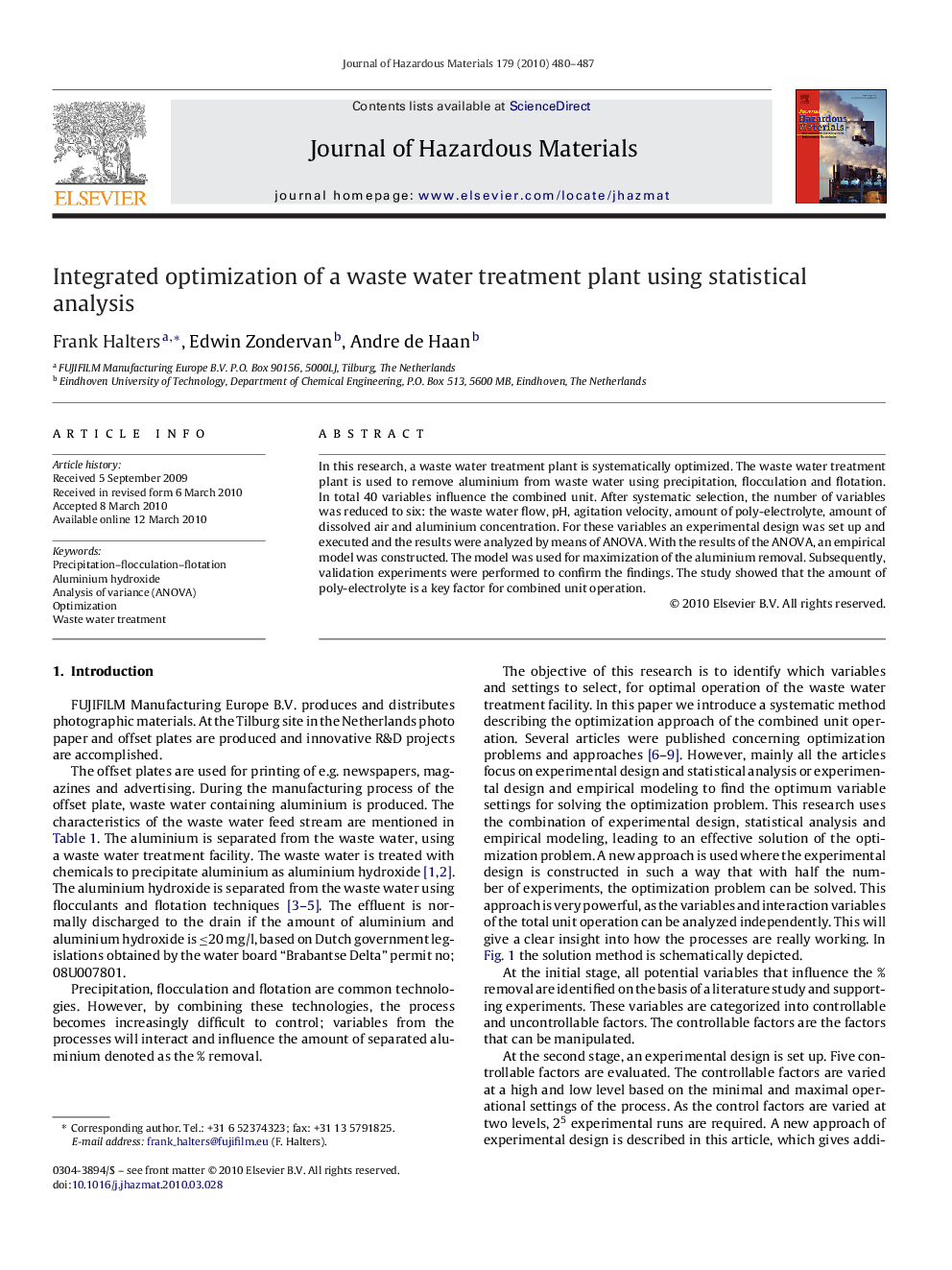| Article ID | Journal | Published Year | Pages | File Type |
|---|---|---|---|---|
| 580391 | Journal of Hazardous Materials | 2010 | 8 Pages |
Abstract
In this research, a waste water treatment plant is systematically optimized. The waste water treatment plant is used to remove aluminium from waste water using precipitation, flocculation and flotation. In total 40 variables influence the combined unit. After systematic selection, the number of variables was reduced to six: the waste water flow, pH, agitation velocity, amount of poly-electrolyte, amount of dissolved air and aluminium concentration. For these variables an experimental design was set up and executed and the results were analyzed by means of ANOVA. With the results of the ANOVA, an empirical model was constructed. The model was used for maximization of the aluminium removal. Subsequently, validation experiments were performed to confirm the findings. The study showed that the amount of poly-electrolyte is a key factor for combined unit operation.
Related Topics
Physical Sciences and Engineering
Chemical Engineering
Chemical Health and Safety
Authors
Frank Halters, Edwin Zondervan, Andre de Haan,
